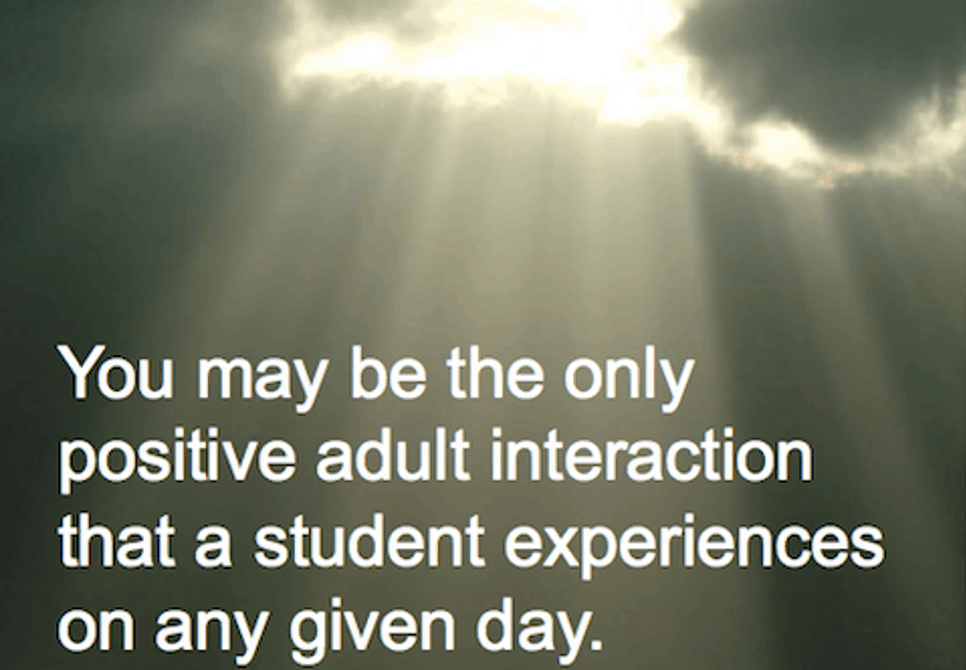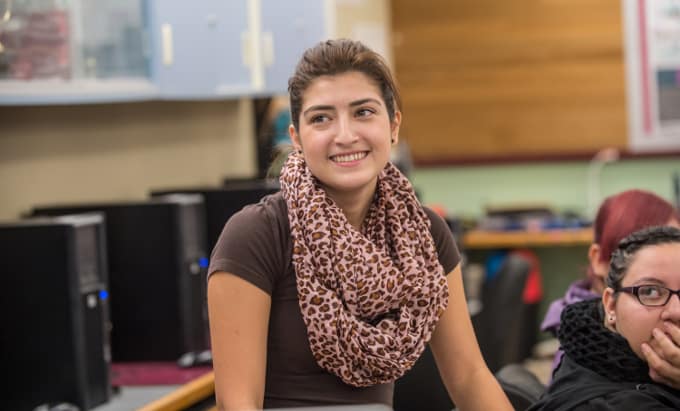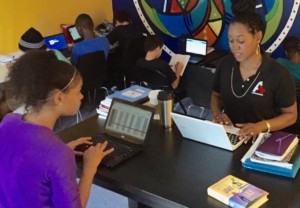Culture of Readiness + Personalization Boosts Graduation Rates

We know the stories that are changing school cultures. These same stories are also the building blocks for students changing their lives.
…the student who learned his teacher was also the first in his family to go to college
…the teacher / advisor who said I’ve reconnected with the reason I went into teaching the first place
…the school that increased graduation rates by 20%
…the parents who said, I’ve never heard my child set goals for the future and really mean it
I like to think of these as defining moments — or “culture changers” — stories that represent the change we are trying to make. Times when students succeed. Times when school feels personalized. Times when we know a school is designed for ALL kids. Times when students “get” that they can drive their futures. Times when students have had a positive adult interaction.
College Spark Washington (CSW), a private foundation in Washington state, knew it would take more than a few years and a few dollars to transform schools into a college readiness culture that could say yes to such questions and achieve bold results. Through its College Readiness Initiative (CRI), College Spark has experience in changing cultures, and has the data and stories to back it up.
Working in partnership with Washington’s state education agency, Office of Superintendent for Public Instruction (OSPI) College Spark’s CRI initiative provided six-year grants to 39 low-income schools in order to prepare more students for college and career. This initiative changed cultures and drove metrics by equipping students to focus on who they are, where they’re headed and what it will take to get there.


The CSW board selected two initiatives to make that difference:
- Career Guidance Washington (CGW, formerly Navigation 101): This college and career readiness initiative that includes advisory, student-led conferences, and personal learning plans, began as a grassroots effort in Washington state and rapidly grew to over 500 schools implementing across the state. The curriculum helps students to identify interests and strengths, consider myriad education and career options and to plan accordingly.
- AVID (Advancement via Individual Determination): This California-based and internationally implemented academic support program helps students succeed in challenging college prep courses and prepare for college.
Some schools implemented both. The goal was to increase students’ college and career readiness and it worked. Schools throughout Washington have seen significant gains in student achievement and enhancements in their college-going and career-ready culture.
IMPACT: What Were the Results?
The purpose of the grant initiative was to support participating districts and schools with diverse populations in high poverty areas across the state as they worked to increase their number of college and career ready students. All schools receiving funding averaged a 61% free-and-reduced lunch rate and 50% students of color. Some schools were at the 98th percentile in both categories.
The program’s desired outcomes included increases in the number of students prepared for post-secondary education as evidenced by taking academically rigorous curriculum (including dual credit programs), graduating with a college-ready transcript and increased engagement in their own post-secondary planning.
Did it work? The data speaks for itself. Here are a few examples based on BERC report data
- Course taking patterns. The number of students taking advanced math in high school increased from 61% in 2008 to 79% in 2015. For chemistry, the numbers jumped from 33% in 2008 to 57% in 2015.
- Graduation rates. In some schools, such as Rogers High School in Spokane (under the leadership of Washington’s AWSP Principal of the Year Lori Wyborney), the school had a graduation rate of 49% at the start of the grant (2008) that jumped to 83% in 2014. Foster High School in Tukwila improved graduation rates by 15 percentage points in just a couple of years. When looking at CRI schools relative to comparable schools in the state, graduation rates were almost 20% higher in the grant-funded schools.
- College-ready transcripts. The number of students meeting requirements for entrance to a 4-year college increased from 38% in 2008 to 54% in 2015. Native American students showed particularly strong improvements, from 32% in 2008 to 70% in 2015.
- Student and Parent Engagement. 90% of students participated in at least one Student-Led Conference (SLCs) in 2015 as opposed to only 73% of students participating in 2010. Parental attendance rose from 40% in 2010 to 79% in 2013.
While measuring culture may be a bit more challenging, program leaders believe some of the biggest impact can be seen there. OSPI’s AVID Director Barbara Dittrich says, “I’ve seen a transformation take place in the schools from not having a college going culture to having one – in some it’s really dramatic.”

IMPLEMENTATION: How Did They Do It?
To attain the desired impact, grant recipients committed to implementing one or both of the following college and career readiness initiatives and adhering to each program’s necessary elements.
| Career Guidance Washington Elements | AVID Essentials in a Nutshell |
|
|
Implementing structures such as advisory, student learning plans, student-led conferences, digital portfoilos ,and instructional supports take time. Through follow up blogs, we will be featuring implementation stories from several schools.
SUSTAINABILITY: What’s Next?
When culture-changing moments and structures are implemented over time, there is a sticking power. While the grant process is wrapping up, almost all of the grantees will continue to implement Career Guidance Washington and AVID as core components of their school’s overall improvement strategies.
Danise Ackelson, who oversees OSPI’s Career Guidance Washington efforts in her role as Supervisor of Guidance and Counseling says, “To look back on where schools started and where they are ending up, there have been huge changes made. The college and career readiness program implementation has resulted in positive impact on school culture and on individuals. It is incredible. It can be sustained in current schools and replicated elsewhere.”
Those looking to make similar changes will have an opportunity to learn from schools in the following Washington districts, several of which will be featured in upcoming blogs on Getting Smart: Aberdeen, Bremerton, Bridgeport, Burlington Edison, Evergreen, Franklin Pierce, Grandview, Mt. Vernon, Rural Consortium, Spokane, Tacoma, Toppenish, and Tukwila.
Their stories of change – and the results that accompanied them – provide great insight into how to both personalize and excel. As Grant Program Director Heather Gingerich says, “It is indeed possible to emphasize rigor and relationships at the same time. When we do, young people graduate with a college-ready transcript and a meaningful relationships.”
One of my culture-changing moments occurred when, as part of the college readiness advisory process, students were expected to invite parents to a student-led conference. One sophomore student attended alone and said her parents weren’t interested. When asked why she came, she replied “I came because I want to be heard and because I want to be the first in my family to go to college. Can you guys help me?”
What are some of your culture-changing moments? We’d love to hear them.
Read More:
- The Role of Advisory in Personalizing Secondary Experience
- Personalizing and Guiding College and Career Readiness
- Tips for Building a College Ready Culture from National Principal of the Year: Trevor Greene
This blog is part of an ongoing series in partnership with College Spark Washington, an organization that funds programs aimed at helping low-income students become college-ready and earn postsecondary degrees, that profiles schools helping to prepare students for college and career.
Stay in-the-know with all things EdTech and innovations in learning by signing up to receive the weekly Smart Update. This post includes mentions of a Getting Smart partner. For a full list of partners, affiliate organizations and all other disclosures please see our Partner page.



0 Comments
Leave a Comment
Your email address will not be published. All fields are required.